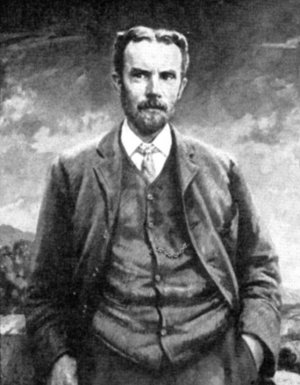
“England is the paradise of individuality, eccentricity, heresy, anomalies.”So wrote George Santayana http://en.wikipedia.org/wiki/George_Santayana in 1922.
Thus begin a few nuggets that I would like to share with you from a rich fruit cake of a book that I am reading, Oliver Heaviside: The Life, Work, and Times of an Electrical Genius of the Victorian Age by Paul J. Nahin.
After a mostly self-taught technical education in advanced electrical and mathematical matters, Heaviside engaged in a stupendously nasty and lengthy battle with William Preece, the engineering head of the Post Office, which was England’s official agency for the development of electrical communications technology. Preece was a powerful government official, enormously ambitious, and, in some ways, an utter blockhead. He was everything that Heaviside, a poor man with no weapons at his disposal but his brains, was not. Their conflict was of such an intense personal nature that it had all the makings of a Victorian melodrama. In the end, although it did him precious little good, Heaviside’s brain proved to be the superior to Preece’s politics.
“Mr Heaviside is the Walt Whitman of English Physics” — George Minchin
“The style is that of Whitman, except that Mr. Heaviside is not affected, and has something to say.” — James SwinburneEnough of nuggets! There is atmosphere aplenty in this book, starting with the human stench and stifling smoke of early Victorian London. But it’s the science that really gets me going.
Perhaps Heaviside’s greatest claim to fame today is that it is he who reduced Maxwell’s system of 20 equations to the 4 we know (and love?) today. He also was the pioneer in understanding how energy could be transferred by electromagnetic radiation.
But there are many more reasons to read this excellent book.
Bored with circuit theory at college? Read how Edward Orange Wildman Whitehouse, chief electrician of the transatlantic telegraph cable for the Atlantic Telegraph Company, pooh-poohed theory and caused the first cable to effectively blow up after a few weeks. William Thomson (later Lord Kelvin) took over and the second cable worked fine and dandy.
Fed up with arguments between engineers and physicists, or pure and applied mathematicians? Heaviside was a giant who towered above them all. Intensely practical, he not only understood the physics and mathematics thoroughly, he made great advances in them. The one with which we are most familiar today is vector algebra, of which he and Josiah Willard Gibbs (of the Free Energy) are the co-founders.
Heaviside did not get on with the way many pure mathematicians go about things. Said he:
The prevalent idea of mathematical works is that you must understand the reason why first, before you proceed to practise. That is fudge and fiddlesticks. I know mathematical processes that I have used with success for a very long time, of which neither I nor anyone else understands the scholastic logic. I have grown into them, and so understand them that way.This may sound a bit rough, but he himself was a mathematician par excellence. He introduced and applied the Heaviside step function, which looks simple enough, but was in practice far too hairy for the pure mathematicians of the time to handle. Another important legacy of his is the Heaviside condition which an electrical transmission line must meet in order for there to be no distortion of a transmitted signal. Also known as the distortionless condition, it can be used to improve the performance of a transmission line by adding loading to the cable.
His Wikipedia and MacTutor biographies can tell you a bit more of the man and his achievements, but I do recommend you read this book. If you don’t want to fork out from your own wallet, ask your college library to get it for you!
One more nugget. This is from a review of the second volume of Heaviside’s Electromagnetic Theory:
“... we do not think the lustre of his discoveries would be at all dimmed were he less proficient in the art of scolding.”





Comments